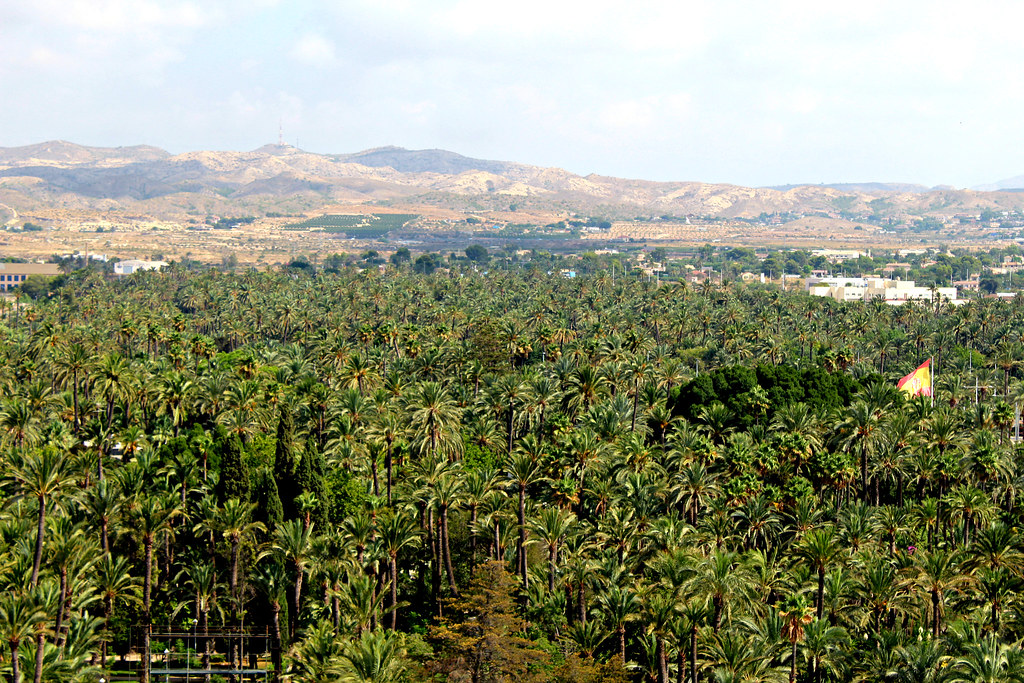In the city of Elche, in Spain, there is a large grove of palm trees that’s the only one of its kind in Europe, and one of the largest palm groves in the world. Elche has more palm trees than people. According to some estimates, there are between 200,000 and 300,000 trees here distributed across hundreds of orchards.
Palm trees have existed in Elche for some 2,500 years. The first specimens were probably planted in the 5th century BC by Carthaginians who settled in south-east Spain. But the formal landscape of palm groves with elaborate irrigation systems that exist today was first laid out by the Muslims towards the end of the tenth century AD, when much of the Iberian peninsula was Arab.
The Palm Grove of Elche, Spain. Photo credit: Karsten Wentink/Flickr
From the distance the Palmeral, or the Palm Grove, appears like a vast forest, but in reality, they form part of the urban landscape of the city. The trees are planted in compact orchards, mostly square or rectangular, and bounded by fences made of dried palm leaves, or in some cases, by plastered walls. In the middle of the orchard, surrounded by palm trees, usually stands the houses of the tenants or owners of the land. Most houses today are abandoned as the orchards have been purchased by the local council. Some of the orchards are now public parks where one can relax surrounded by palm trees and listen to the sound of the water coming through the irrigation pipes.
Historically, the orchards were planted for agricultural purposes. The trees produced dates while the shade they provided benefited the cultivation of vegetables. As the town spread in the 17th century, some of the orchards were cut down. This process was exacerbated with the industrial revolution and the arrival of the railway in the 19th century. Over time, the groves lost their agricultural role and date harvesting became merely an anecdotal activity mostly for domestic or very local consumption. Currently, the Palm Grove’s role is more as a landscape and a cultural asset than as an agricultural site.
Recognizing the cultural importance of the site, in 2000, the UNESCO designated the Palm Grove as a World Heritage Site.
Photo credit: Héctor Rodríguez/Flickr
Photo credit: Vlc/Flickr
Photo credit: Simon/Flickr
Palm trees in Huerto del Cura, the most popular garden in the Palm Grove. It contains around 1000 palm trees, some of them around 300 years old. Photo credit: Simon/Flickr
Photo credit: Concepcion Muñoz/Flickr




















Comments
Post a Comment